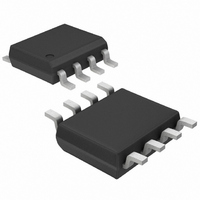MAX3074EASA+ Maxim Integrated Products, MAX3074EASA+ Datasheet - Page 16

MAX3074EASA+
Manufacturer Part Number
MAX3074EASA+
Description
IC TXRX RS485/422 8-SOIC
Manufacturer
Maxim Integrated Products
Type
Transceiverr
Datasheet
1.MAX3070EESD.pdf
(24 pages)
Specifications of MAX3074EASA+
Number Of Drivers/receivers
1/1
Protocol
RS422, RS485
Voltage - Supply
3 V ~ 3.6 V
Mounting Type
Surface Mount
Package / Case
8-SOIC (3.9mm Width)
Data Rate
500 Kbps
Operating Supply Voltage
3.3 V
Supply Current
0.8 mA
Operating Temperature Range
- 40 C to + 125 C
Maximum Power Dissipation
471 mW
Mounting Style
SMD/SMT
Device Type
Transceiver
Ic Interface Type
RS422, RS485
No. Of Drivers
1
Supply Voltage Range
2.97V To 3.63V
Driver Case Style
SOIC
No. Of Pins
8
Rohs Compliant
Yes
Lead Free Status / RoHS Status
Lead free / RoHS Compliant
The MAX3079E has several programmable operating
modes. Transmitter rise and fall times are programma-
ble, resulting in maximum data rates of 250kbps,
500kbps, and 16Mbps. To select the desired data rate,
drive SRL to one of three possible states by using a
three-state driver: V
250kbps operation, set the three-state device in high-
impedance mode or leave SRL unconnected. For
500kbps operation, drive SRL high or connect it to V
For 16Mbps operation, drive SRL low or connect it to
GND. SRL can be changed during operation without
interrupting data communications.
Occasionally, twisted-pair lines are connected backward
from normal orientation. The MAX3079E has two pins that
invert the phase of the driver and the receiver to correct
this problem. For normal operation, drive TXP and RXP
low, connect them to ground, or leave them unconnect-
ed (internal pulldown). To invert the driver phase, drive
TXP high or connect it to V
phase, drive RXP high or connect it to V
receiver threshold is positive when RXP is high.
The MAX3079E can operate in full- or half-duplex
mode. Drive the H/F pin low, leave it unconnected
(internal pulldown), or connect it to GND for full-duplex
+3.3V, ±15kV ESD-Protected, Fail-Safe,
Hot-Swap, RS-485/RS-422 Transceivers
Figure 9. Simplified Structure of the Driver Enable Pin (DE)
16
DE
______________________________________________________________________________________
TIMER
V
TIMER
CC
5kΩ
M1
100μA
500μA
10μs
CC
MAX3079E Programming
, GND, or unconnected. For
M2
CC
. To invert the receiver
SR LATCH
CC
. Note that the
DE
(HOT SWAP)
CC
.
operation. Drive H/F high for half-duplex operation. In
full-duplex mode, the pin configuration of the driver and
receiver is the same as that of a MAX3070E. In half-
duplex mode, the receiver inputs are switched to the
driver outputs, connecting outputs Y and Z to inputs A
and B, respectively. In half-duplex mode, the internal
full-duplex receiver input resistors are still connected to
pins 11 and 12.
As with all Maxim devices, ESD-protection structures
are incorporated on all pins to protect against electro-
static discharges encountered during handling and
assembly. The driver outputs and receiver inputs of the
MAX3070E family of devices have extra protection
against static electricity. Maxim’s engineers have devel-
oped state-of-the-art structures to protect these pins
against ESD of ±15kV without damage. The ESD struc-
tures withstand high ESD in all states: normal operation,
shutdown, and powered down. After an ESD event, the
MAX3070E–MAX3079E keep working without latchup or
damage.
ESD protection can be tested in various ways. The
transmitter outputs and receiver inputs of the
MAX3070E–MAX3079E are characterized for protection
to the following limits:
• ±15kV using the Human Body Model
• ±6kV using the Contact Discharge method specified
ESD performance depends on a variety of conditions.
Contact Maxim for a reliability report that documents
test setup, test methodology, and test results.
Figure 10a shows the Human Body Model, and Figure
10b shows the current waveform it generates when dis-
charged into a low impedance. This model consists of a
100pF capacitor charged to the ESD voltage of interest,
which is then discharged into the test device through a
1.5kΩ resistor.
The IEC 1000-4-2 standard covers ESD testing and
performance of finished equipment. However, it does
not specifically refer to integrated circuits. The
MAX3070E family of devices helps you design equip-
ment to meet IEC 1000-4-2, without the need for addi-
tional ESD-protection components.
The major difference between tests done using the
Human Body Model and IEC 1000-4-2 is higher peak
in IEC 1000-4-2
±15kV ESD Protection
ESD Test Conditions
Human Body Model
IEC 1000-4-2











